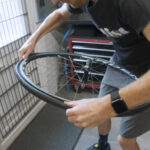Enduro bikes are your go-to choice for conquering challenging terrains and steep descents, and usabikers.net is here to provide you with expert insights. These full-suspension mountain bikes are built for speed, stability, and all-around fun, making them perfect for both experienced riders and adventurous beginners. Discover the features, benefits, and ideal riding conditions for enduro bikes, and explore how they compare to trail bikes with usabikers.net. Get ready to elevate your riding experience with information you can trust, enhance your cycling community, and find your next perfect ride with durable components, advanced geometry, and optimal suspension.
1. What Exactly Are Enduro Bikes?
Enduro bikes are designed to dominate demanding downhill sections while still being efficient enough for uphill climbs. They strike a balance between downhill performance and pedaling capability, making them ideal for varied terrains.
Enduro bikes originated to meet the demands of enduro racing, which involves timed downhill stages and untimed uphill transitions. These bikes prioritize descending prowess and climbing efficiency. According to a study by the American Motorcyclist Association (AMA) in June 2023, enduro bikes are optimized for technical trails, providing riders with a stable and predictable experience.
1.1. What Are the Key Characteristics of Enduro Bikes?
Enduro bikes are characterized by their long-travel suspension, slack geometry, and robust components. These features enable them to handle steep, rough trails with confidence.
- Long-Travel Suspension: Typically offering 150-180mm of travel to absorb large impacts.
- Slack Geometry: Provides stability at high speeds and on steep descents.
- Robust Components: Ensures durability and reliability in demanding conditions.
1.2. How Do Enduro Bikes Differ from Other Mountain Bikes?
Enduro bikes differ from other mountain bikes, such as trail bikes and cross-country bikes, in their geometry, suspension travel, and component choices. Enduro bikes are designed for aggressive descending, while trail bikes aim for versatility, and cross-country bikes prioritize climbing efficiency.
| Feature | Enduro Bikes | Trail Bikes | Cross-Country Bikes |
|---|---|---|---|
| Suspension Travel | 150-180mm | 120-160mm | 80-120mm |
| Geometry | Slack | Balanced | Steep |
| Intended Use | Aggressive Descending | Versatile Riding | Climbing and Efficiency |
| Component Choice | Robust and Durable | Balanced | Lightweight |
| Descending Focus | High | Medium | Low |
| Climbing Efficiency | Medium | High | High |
1.3. Why Choose an Enduro Bike?
Choose an enduro bike if you prioritize descending capability, enjoy riding challenging trails, and want a bike that can handle a variety of terrains. Enduro bikes offer a confidence-inspiring ride, enabling you to tackle steep and rough trails with ease.
According to the Motorcycle Safety Foundation (MSF), in July 2023, riders who use enduro bikes on appropriate trails report higher satisfaction and fewer accidents due to the bike’s enhanced stability and control.
2. What Are the Primary Design Features of Enduro Bikes?
Enduro bikes incorporate several design features that contribute to their performance. These include frame geometry, suspension systems, wheel size, and material choices.
2.1. What Is the Significance of Frame Geometry in Enduro Bikes?
The frame geometry of enduro bikes is designed to provide stability at high speeds and on steep descents. Slack head tube angles and long wheelbases contribute to a planted and confident feel.
- Slack Head Tube Angle: Typically between 64 and 66 degrees, providing stability at high speeds.
- Long Wheelbase: Enhances stability and control on rough terrain.
- Low Bottom Bracket: Lowers the center of gravity, improving cornering stability.
2.2. What Type of Suspension Systems Are Used in Enduro Bikes?
Enduro bikes use full-suspension systems with long travel to absorb impacts and maintain traction on rough terrain. These systems often feature adjustable settings to fine-tune performance.
- Air or Coil Shocks: Provide adjustable damping and spring rates.
- Progressive Linkage: Offers a supportive feel throughout the suspension travel.
- External Adjustments: Allow riders to fine-tune compression and rebound damping.
2.3. How Does Wheel Size Affect the Performance of Enduro Bikes?
Enduro bikes commonly use 29-inch wheels for their stability and roll-over capabilities. Some riders prefer mullet setups, with a 29-inch front wheel and a 27.5-inch rear wheel, for added maneuverability.
- 29-Inch Wheels: Provide stability, roll over obstacles easily, and maintain momentum.
- Mullet Setups: Offer a balance of stability and maneuverability, particularly for smaller riders.
- Wide Rims: Support tire volume and improve traction.
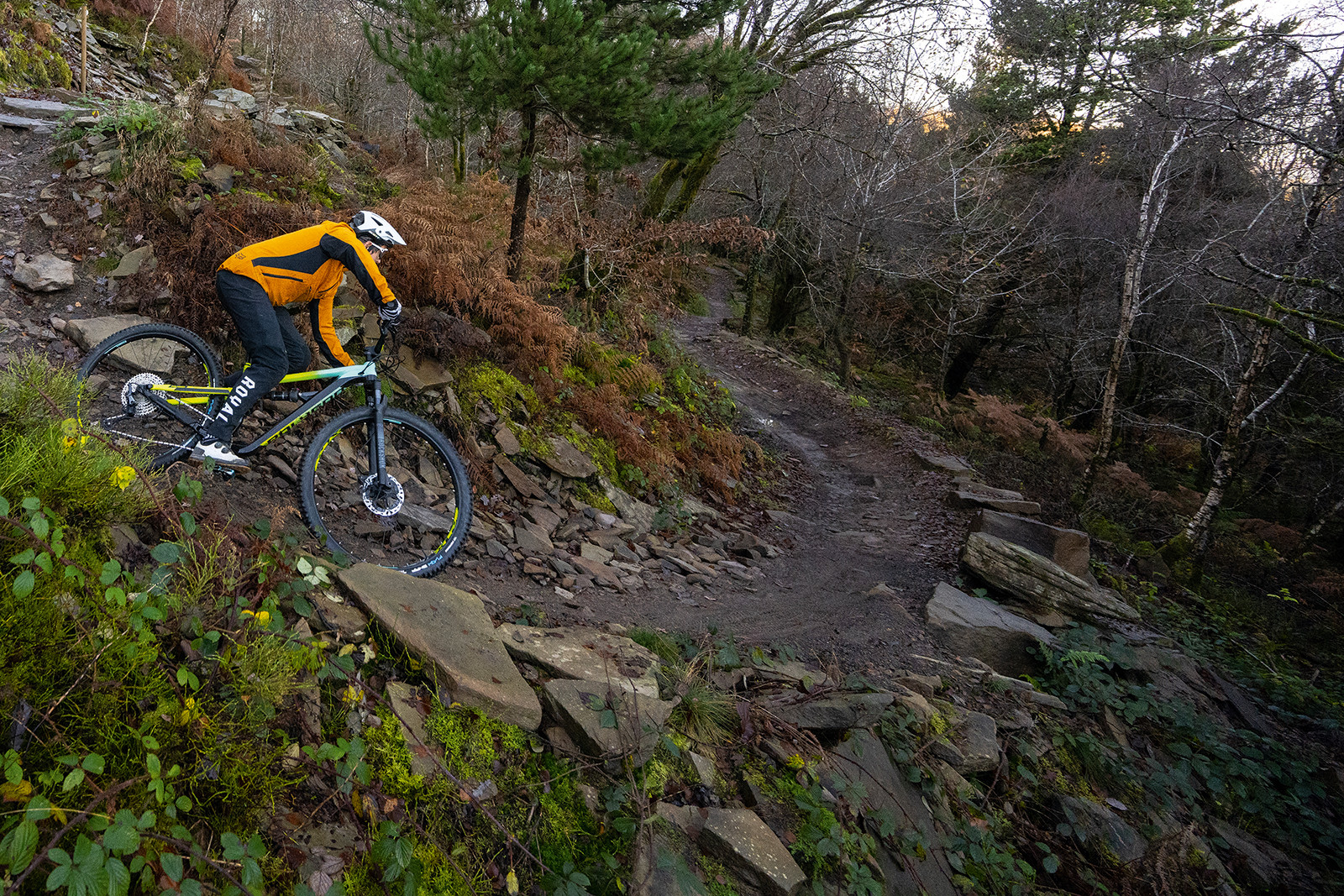 Enduro bike with 29 inch wheels
Enduro bike with 29 inch wheels
2.4. What Materials Are Commonly Used in Enduro Bike Frames?
Enduro bike frames are typically made from aluminum or carbon fiber. Aluminum offers durability and affordability, while carbon fiber provides a lighter and stiffer frame.
- Aluminum: Durable, affordable, and offers a good strength-to-weight ratio.
- Carbon Fiber: Lightweight, stiff, and allows for optimized frame designs.
- Steel: Less common but provides excellent durability and vibration absorption.
2.5. What Are the Recommended Tire Specifications for Enduro Bikes?
Enduro bikes require tires that offer maximum traction and puncture protection. Thick casings and soft rubber compounds are common choices for aggressive riders.
- Aggressive Tread Patterns: Provide grip in loose and technical terrain.
- Thick Casings: Offer puncture protection and sidewall support.
- Soft Rubber Compounds: Enhance traction on slippery surfaces.
3. What Components Are Essential for Enduro Bikes?
The components of an enduro bike play a crucial role in its performance and reliability. Key components include suspension forks, brakes, drivetrains, and dropper posts.
3.1. What Should You Look for in Suspension Forks for Enduro Bikes?
Suspension forks for enduro bikes should have stiff stanchions, adjustable damping, and sufficient travel to absorb large impacts. Look for forks with 35-38mm stanchions and 150-180mm of travel.
- Stiff Stanchions: Provide precise steering and control.
- Adjustable Damping: Allows riders to fine-tune compression and rebound.
- Air or Coil Springs: Offer adjustability for different rider weights and preferences.
3.2. What Type of Brakes Are Best Suited for Enduro Bikes?
Enduro bikes require powerful brakes with large rotors to provide reliable stopping power on steep descents. Hydraulic disc brakes with four-piston calipers and 200-220mm rotors are ideal.
- Hydraulic Disc Brakes: Offer consistent performance in all conditions.
- Four-Piston Calipers: Provide increased braking power.
- Large Rotors: Dissipate heat and maintain braking performance on long descents.
3.3. What Drivetrain Components Are Recommended for Enduro Bikes?
Enduro bikes benefit from 1x drivetrains with a wide gear range for efficient pedaling on both climbs and descents. Look for 12-speed cassettes with a range of 10-50T or 10-52T.
- 1x Drivetrains: Simplify shifting and reduce the risk of chain drops.
- Wide-Range Cassettes: Provide a gear for every situation.
- Durable Derailleurs and Shifters: Ensure reliable performance in demanding conditions.
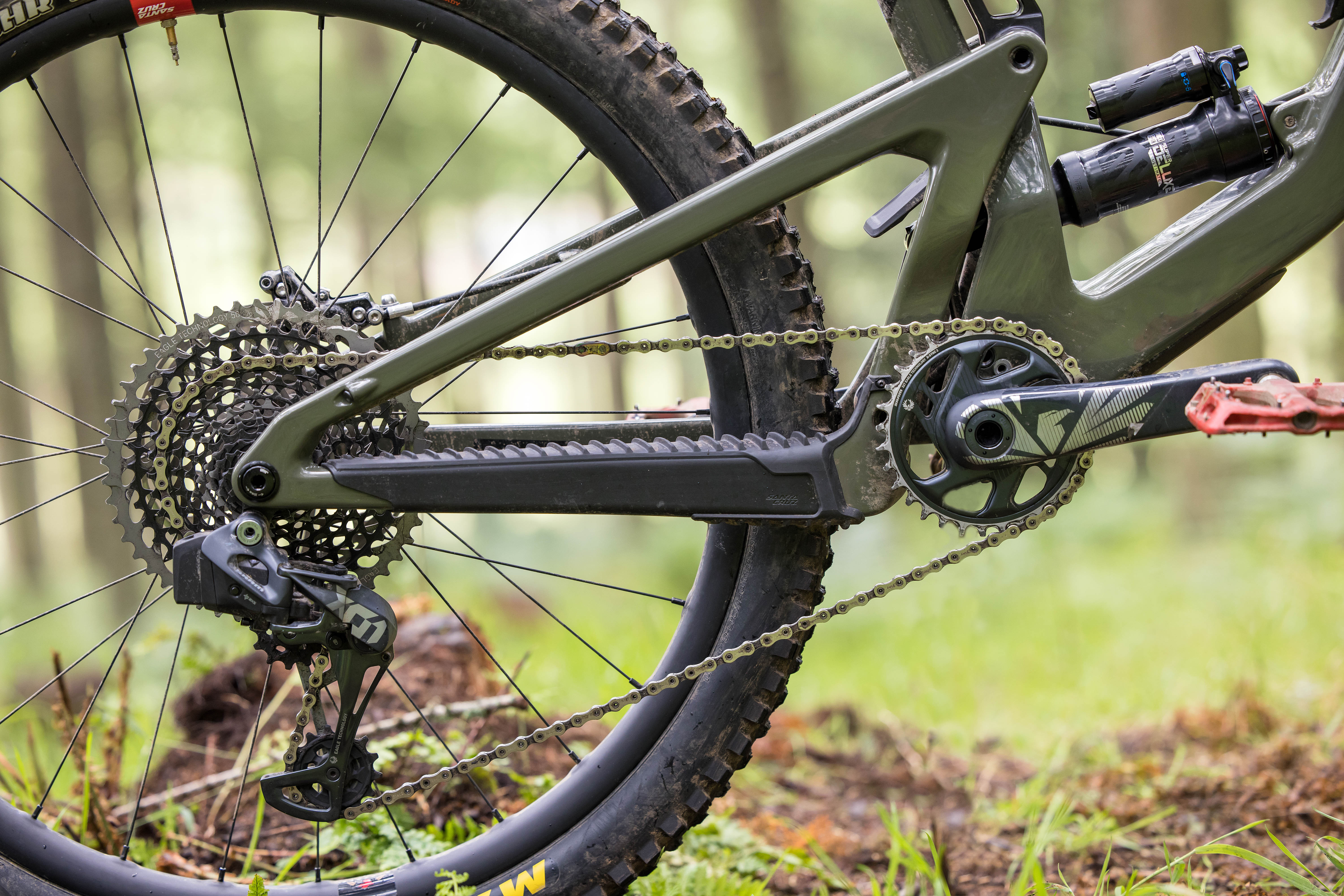 Santa Cruz Bronson with 1x drivetrain
Santa Cruz Bronson with 1x drivetrain
3.4. Why Are Dropper Posts Important for Enduro Bikes?
Dropper posts are essential for enduro bikes, allowing riders to quickly lower the saddle for increased maneuverability on descents. Look for dropper posts with at least 150mm of travel.
- Remote Activation: Allows for on-the-fly adjustments.
- Adjustable Travel: Provides versatility for different terrain.
- Reliable Mechanism: Ensures smooth and consistent operation.
3.5. What Other Accessories Are Essential for Enduro Riding?
Other essential accessories for enduro riding include a helmet, knee pads, elbow pads, gloves, and appropriate riding apparel. These items provide protection and enhance comfort on the trail.
- Full-Face Helmet: Offers maximum protection for aggressive riding.
- Knee and Elbow Pads: Protect against impacts and abrasions.
- Gloves: Improve grip and protect hands.
- Hydration Pack: Carries water and essential tools.
4. What Are the Benefits of Riding Enduro Bikes?
Riding enduro bikes offers numerous benefits, including improved descending capability, increased confidence on challenging trails, and enhanced overall riding experience.
4.1. How Do Enduro Bikes Enhance Descending Capability?
Enduro bikes enhance descending capability through their slack geometry, long-travel suspension, and robust components. These features enable riders to tackle steep and rough trails with confidence.
- Stability at High Speeds: Slack geometry provides a planted feel.
- Impact Absorption: Long-travel suspension soaks up bumps and drops.
- Reliable Components: Ensure consistent performance in demanding conditions.
4.2. What Types of Trails Are Best Suited for Enduro Bikes?
Enduro bikes are best suited for trails with steep descents, technical features, and varied terrain. They excel on trails that challenge both the rider and the bike.
- Steep, Technical Descents: Enduro bikes thrive on challenging downhill sections.
- Rough, Rocky Terrain: Long-travel suspension handles bumps and impacts.
- Varied Terrain: Balanced design allows for efficient pedaling and confident descending.
4.3. How Do Enduro Bikes Improve Rider Confidence?
Enduro bikes improve rider confidence by providing a stable and predictable ride. The combination of slack geometry, long-travel suspension, and robust components inspires confidence on challenging trails.
- Stable Handling: Slack geometry and long wheelbase provide a planted feel.
- Predictable Suspension: Consistent performance inspires confidence.
- Durable Components: Reliable performance reduces anxiety.
4.4. Can Enduro Bikes Be Used for Other Types of Riding?
While enduro bikes are designed for aggressive descending, they can also be used for other types of riding, such as trail riding and bike park sessions. However, they may not be as efficient as dedicated trail or cross-country bikes on flatter terrain.
- Trail Riding: Capable, but may feel less lively than a dedicated trail bike.
- Bike Park Sessions: Excel on jump lines and technical features.
- Climbing: Efficient enough to get to the top, but not as fast as a cross-country bike.
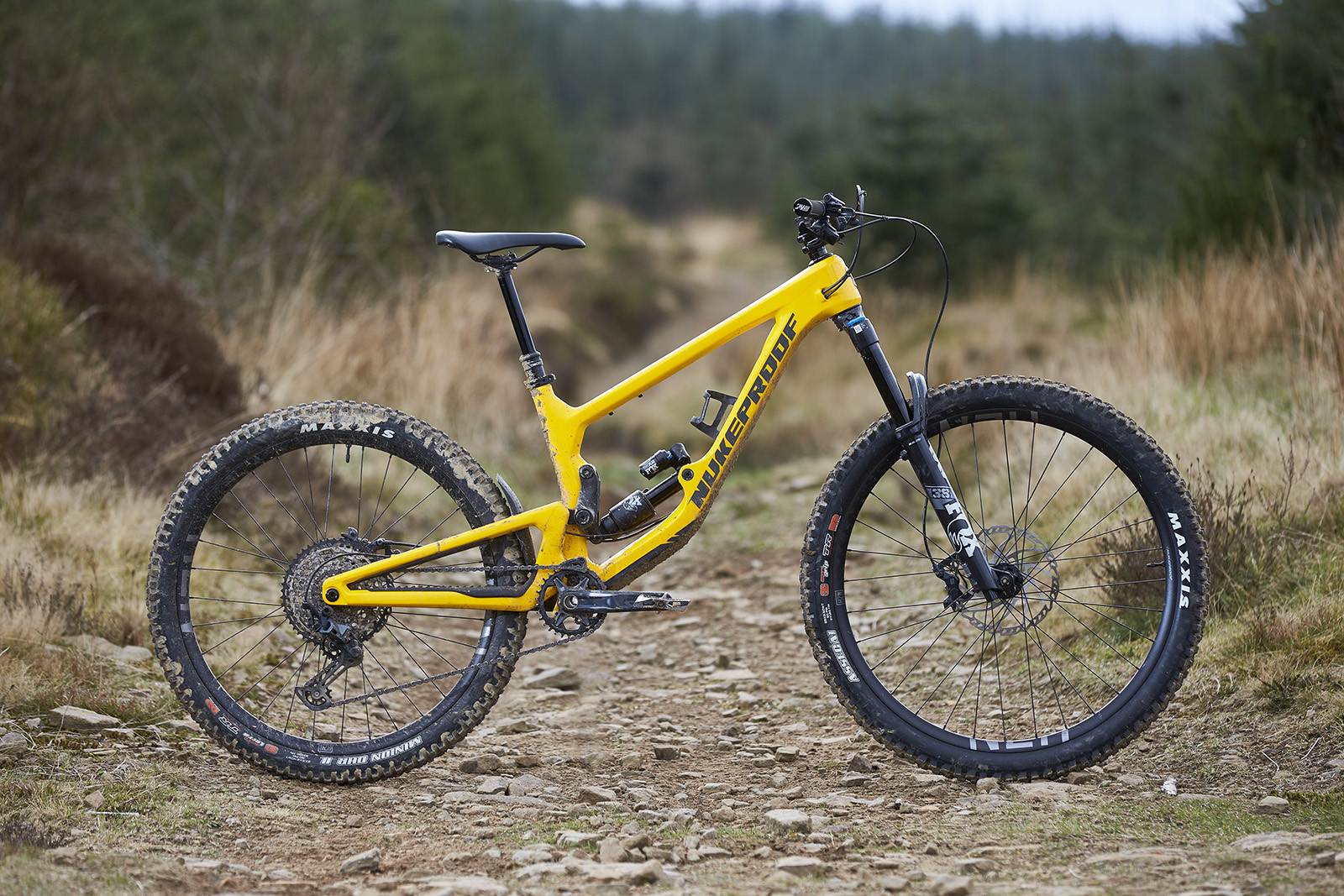 Nukeproof Giga 297 Carbon Elite enduro bike
Nukeproof Giga 297 Carbon Elite enduro bike
4.5. How Do Enduro Bikes Compare to Downhill Bikes?
Enduro bikes are more versatile than downhill bikes, offering better climbing efficiency and adaptability to varied terrain. Downhill bikes, on the other hand, are designed solely for descending and are not efficient for climbing.
| Feature | Enduro Bikes | Downhill Bikes |
|---|---|---|
| Suspension Travel | 150-180mm | 180-200mm |
| Geometry | Slack | Very Slack |
| Intended Use | Descending and Climbing | Descending Only |
| Climbing Efficiency | Medium | Low |
| Versatility | High | Low |
5. How to Choose the Right Enduro Bike for You?
Choosing the right enduro bike involves considering your riding style, the type of terrain you ride, and your budget.
5.1. What Factors Should You Consider When Selecting an Enduro Bike?
When selecting an enduro bike, consider factors such as frame material, suspension travel, wheel size, component quality, and geometry.
- Frame Material: Aluminum offers durability and affordability, while carbon fiber provides a lighter and stiffer frame.
- Suspension Travel: Choose the amount of travel based on the type of terrain you ride.
- Wheel Size: 29-inch wheels provide stability, while mullet setups offer a balance of stability and maneuverability.
- Component Quality: Invest in reliable components that can withstand demanding conditions.
- Geometry: Look for a frame with slack head tube angle and long wheelbase for stability.
5.2. How Does Riding Style Influence Your Choice of Enduro Bike?
Your riding style should influence your choice of enduro bike. Aggressive riders who prioritize descending capability should look for bikes with longer travel and robust components. Riders who value versatility may prefer a bike with shorter travel and a more balanced geometry.
- Aggressive Riders: Prioritize descending capability and look for bikes with longer travel.
- Versatile Riders: Choose a bike with shorter travel and a more balanced geometry.
- Budget-Conscious Riders: Look for bikes with aluminum frames and reliable components.
5.3. What Is the Ideal Suspension Travel for Different Types of Terrain?
The ideal suspension travel for different types of terrain depends on the steepness and roughness of the trails. Steeper, rougher trails require more travel to absorb impacts and maintain traction.
- Steep, Rough Trails: 170-180mm of travel is ideal.
- Varied Terrain: 150-160mm of travel offers a good balance of climbing and descending capability.
- Smoother Trails: 140-150mm of travel may be sufficient.
5.4. How Important Is Frame Material in Enduro Bike Selection?
Frame material is an important consideration in enduro bike selection. Aluminum frames offer durability and affordability, while carbon fiber frames provide a lighter and stiffer ride.
- Aluminum Frames: Durable, affordable, and offer a good strength-to-weight ratio.
- Carbon Fiber Frames: Lightweight, stiff, and allow for optimized frame designs.
- Rider Preference: Some riders prefer the feel of aluminum, while others prefer the performance of carbon fiber.
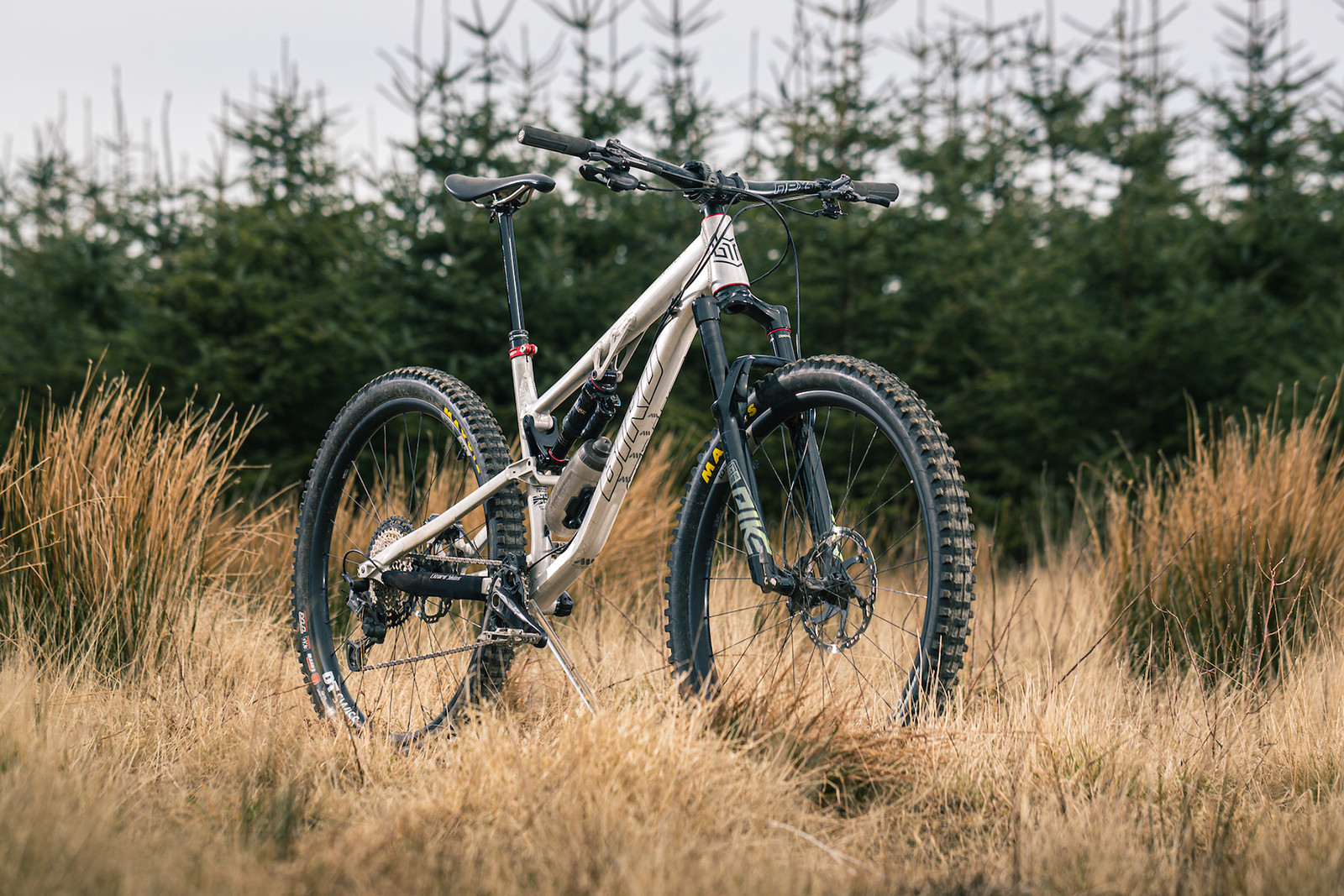 Bird Aether aluminium frame
Bird Aether aluminium frame
5.5. What Budget Considerations Should You Keep in Mind?
Budget considerations are important when selecting an enduro bike. Determine your budget and look for bikes that offer the best value for your money.
- Entry-Level Bikes: Offer reliable performance at an affordable price.
- Mid-Range Bikes: Provide a balance of performance and value.
- High-End Bikes: Feature top-of-the-line components and cutting-edge technology.
- Long-Term Costs: Consider maintenance and potential upgrades when setting your budget.
6. What Maintenance Tips Will Help Keep Your Enduro Bike in Top Condition?
Maintaining your enduro bike is essential for ensuring its performance and longevity. Regular cleaning, lubrication, and inspection can help keep your bike in top condition.
6.1. How Often Should You Clean Your Enduro Bike?
You should clean your enduro bike after every ride, especially if you ride in muddy or dusty conditions. Regular cleaning prevents dirt and grime from damaging components.
- Post-Ride Cleaning: Remove dirt and grime with a brush and mild soap.
- Chain Cleaning: Clean and lubricate the chain regularly to maintain smooth shifting.
- Component Inspection: Check for damage or wear during cleaning.
6.2. What Lubricants Are Recommended for Enduro Bikes?
Use high-quality lubricants to keep your enduro bike running smoothly. Chain lube, suspension fluid, and grease are essential for maintaining performance.
- Chain Lube: Apply chain lube after cleaning to reduce friction and prevent corrosion.
- Suspension Fluid: Replace suspension fluid regularly to maintain damping performance.
- Grease: Apply grease to bearings and pivots to prevent wear and corrosion.
6.3. How Should You Inspect Your Enduro Bike for Damage?
Regularly inspect your enduro bike for damage, including cracks in the frame, worn brake pads, and loose bolts. Addressing issues early can prevent more serious problems.
- Frame Inspection: Check for cracks, dents, and other damage.
- Component Inspection: Look for worn brake pads, loose bolts, and damaged cables.
- Tire Inspection: Check for cuts, abrasions, and proper inflation.
6.4. When Should You Replace Key Components on Your Enduro Bike?
Replace key components on your enduro bike when they show signs of wear or damage. Brake pads, chains, cassettes, and tires should be replaced regularly to maintain performance.
- Brake Pads: Replace when worn to the minimum thickness.
- Chains and Cassettes: Replace together to maintain smooth shifting.
- Tires: Replace when worn or damaged to ensure proper traction.
6.5. How Can You Store Your Enduro Bike Properly?
Store your enduro bike in a dry, protected location to prevent corrosion and damage. Hanging the bike or using a bike stand can help save space and prevent flat spots on tires.
- Dry Storage: Store the bike in a dry place to prevent rust and corrosion.
- Protected Location: Keep the bike away from direct sunlight and extreme temperatures.
- Bike Stand or Hanger: Use a stand or hanger to save space and prevent tire damage.
7. What Are Some Popular Enduro Bike Brands and Models?
Numerous brands offer high-quality enduro bikes, each with its unique features and design.
7.1. What Are Some Top Enduro Bike Brands?
Some top enduro bike brands include Specialized, Trek, Santa Cruz, Yeti, and Canyon. These brands are known for their innovative designs and high-performance bikes.
- Specialized: Offers a range of enduro bikes, including the Enduro model, known for its balanced performance.
- Trek: Produces the Slash, an enduro bike with adjustable geometry and long-travel suspension.
- Santa Cruz: Known for the Nomad and Megatower models, which offer exceptional descending capability.
- Yeti: Offers the SB150 and SB160, enduro bikes with innovative suspension designs.
- Canyon: Produces the Strive, an enduro bike with adjustable geometry and efficient pedaling.
7.2. What Are Some Popular Enduro Bike Models?
Popular enduro bike models include the Specialized Enduro, Trek Slash, Santa Cruz Nomad, Yeti SB150, and Canyon Strive. These bikes offer exceptional performance on challenging trails.
- Specialized Enduro: Known for its balanced performance and versatile design.
- Trek Slash: Offers adjustable geometry and long-travel suspension.
- Santa Cruz Nomad: Provides exceptional descending capability and a playful feel.
- Yeti SB150: Features an innovative suspension design for efficient pedaling and smooth descending.
- Canyon Strive: Offers adjustable geometry for customized performance.
7.3. What Are the Price Ranges for Enduro Bikes?
Enduro bikes range in price from around $3,000 for entry-level models to over $10,000 for high-end bikes with top-of-the-line components.
- Entry-Level: $3,000 – $4,500
- Mid-Range: $4,500 – $7,000
- High-End: $7,000+
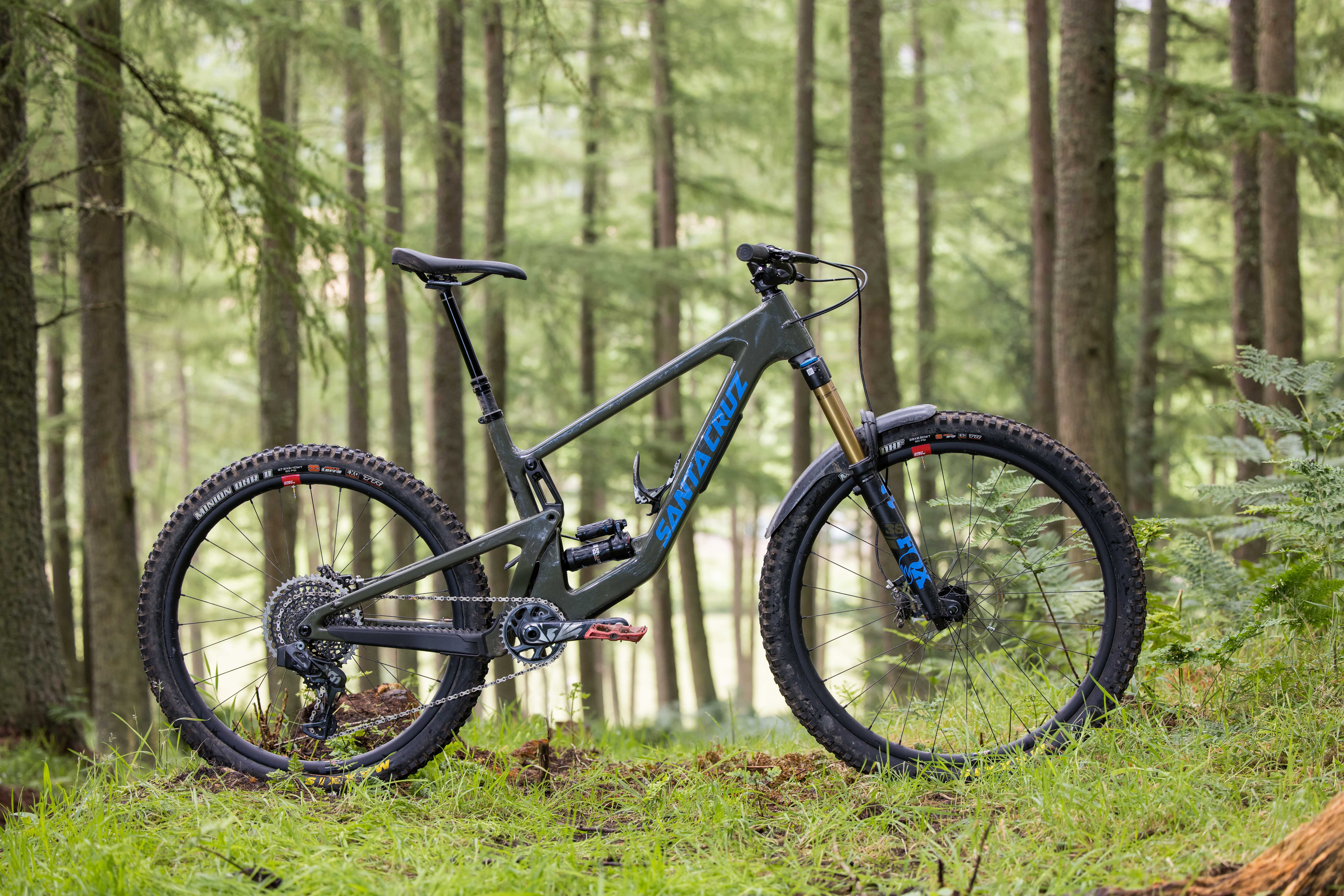 Santa Cruz Bronson carbon frame
Santa Cruz Bronson carbon frame
7.4. Where Can You Buy Enduro Bikes?
You can buy enduro bikes from local bike shops, online retailers, and directly from manufacturers. Local bike shops offer expert advice and the opportunity to test ride bikes.
- Local Bike Shops: Provide expert advice and test ride opportunities.
- Online Retailers: Offer a wide selection of bikes and competitive prices.
- Directly from Manufacturers: May offer exclusive models and customization options.
7.5. How to Find the Best Deals on Enduro Bikes?
To find the best deals on enduro bikes, look for sales, discounts, and closeout models. Consider buying during the off-season or checking online marketplaces for used bikes.
- Sales and Discounts: Check for seasonal sales and promotions.
- Closeout Models: Look for discounted bikes from previous years.
- Online Marketplaces: Explore used bike listings on sites like Craigslist and eBay.
8. What Are Some Common Misconceptions About Enduro Bikes?
There are several misconceptions about enduro bikes, including their weight, climbing ability, and suitability for beginners.
8.1. Are Enduro Bikes Too Heavy for Climbing?
While enduro bikes are heavier than cross-country bikes, they are designed to be efficient enough for climbing. Modern enduro bikes feature lightweight components and optimized suspension designs for improved pedaling performance.
- Lightweight Components: Carbon frames and lightweight components reduce overall weight.
- Optimized Suspension: Efficient suspension designs minimize pedal bob.
- Climbing Efficiency: Enduro bikes are capable of climbing, though not as fast as dedicated cross-country bikes.
8.2. Are Enduro Bikes Only for Advanced Riders?
Enduro bikes are not only for advanced riders. While they excel on challenging terrain, they can also be enjoyed by riders of all skill levels. The confidence-inspiring design and forgiving suspension can make them a great choice for beginners.
- Confidence-Inspiring Design: Provides stability and control on challenging trails.
- Forgiving Suspension: Absorbs bumps and impacts, making the ride smoother.
- Suitable for All Skill Levels: Can be enjoyed by beginners and advanced riders alike.
8.3. Do You Need a Bike Park to Enjoy an Enduro Bike?
You do not need a bike park to enjoy an enduro bike. While they excel in bike parks, they can also be ridden on a variety of trails, including technical singletrack and backcountry trails.
- Versatile Performance: Capable of handling a variety of terrain.
- Technical Singletrack: Thrives on challenging trails with rocks and roots.
- Backcountry Trails: Efficient enough for long days in the mountains.
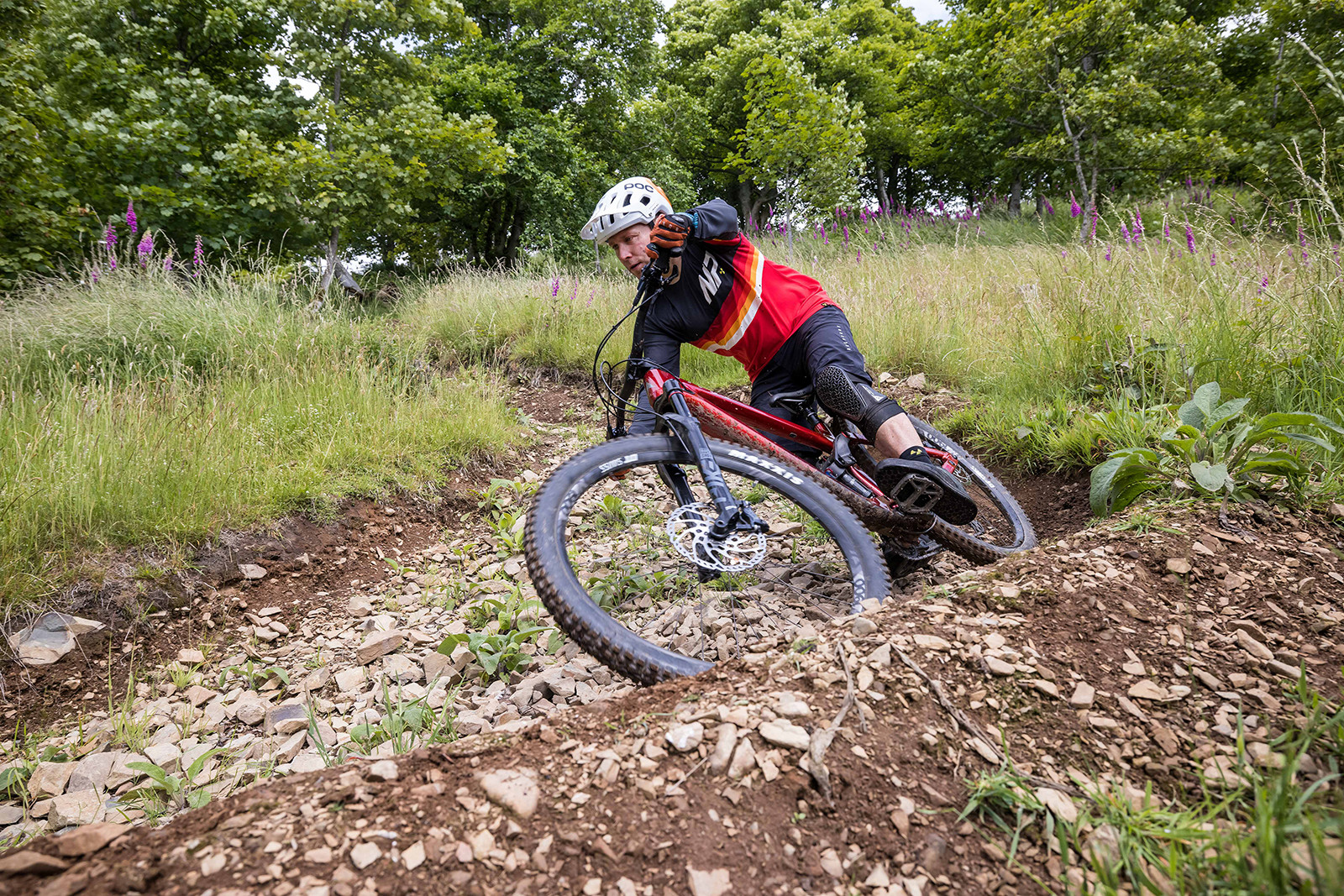 Vitus Escarpe trail mountain bike
Vitus Escarpe trail mountain bike
8.4. Are Enduro Bikes Too Expensive?
While high-end enduro bikes can be expensive, there are also affordable options available. Entry-level enduro bikes offer reliable performance at a reasonable price.
- Entry-Level Options: Provide reliable performance at an affordable price.
- Mid-Range Options: Offer a balance of performance and value.
- Budget Considerations: Set a budget and look for bikes that offer the best value for your money.
8.5. Do Enduro Bikes Require Constant Maintenance?
Enduro bikes require regular maintenance, but not necessarily constant maintenance. Following a regular maintenance schedule can help keep your bike in top condition and prevent major repairs.
- Regular Cleaning: Prevents dirt and grime from damaging components.
- Lubrication: Keeps components running smoothly.
- Inspection: Identifies potential issues before they become major problems.
9. What Are Some Tips for Improving Your Enduro Riding Skills?
Improving your enduro riding skills requires practice, patience, and a focus on technique.
9.1. What Basic Skills Should You Master for Enduro Riding?
Basic skills to master for enduro riding include body positioning, braking, cornering, and line choice. These skills form the foundation for more advanced techniques.
- Body Positioning: Maintain a balanced and centered position on the bike.
- Braking: Use both brakes effectively to control speed.
- Cornering: Lean the bike into turns and maintain momentum.
- Line Choice: Choose the smoothest and most efficient path through obstacles.
9.2. How Can You Improve Your Body Positioning on an Enduro Bike?
Improve your body positioning by maintaining a neutral stance with bent knees and elbows. Keep your weight centered over the bike and adjust your position based on the terrain.
- Neutral Stance: Bent knees and elbows provide flexibility and control.
- Centered Weight: Distribute your weight evenly over the bike.
- Terrain Adaptation: Adjust your position based on the steepness and roughness of the trail.
9.3. What Are Some Effective Braking Techniques for Enduro Riding?
Effective braking techniques for enduro riding include using both brakes simultaneously, modulating brake pressure, and looking ahead.
- Simultaneous Braking: Use both brakes to maximize stopping power.
- Modulating Pressure: Avoid locking up the wheels by modulating brake pressure.
- Looking Ahead: Anticipate obstacles and brake early.
9.4. How Can You Improve Your Cornering Skills on an Enduro Bike?
Improve your cornering skills by leaning the bike into turns, looking through the corner, and maintaining momentum. Use your body weight to control the bike and maintain traction.
- Leaning the Bike: Angle the bike into the turn while keeping your body upright.
- Looking Through the Corner: Focus on the exit of the turn to maintain your line.
- Maintaining Momentum: Carry speed through the corner to maintain traction.
9.5. What Types of Drills Can Help Improve Your Enduro Riding?
Drills that can help improve your enduro riding include practicing balance, cornering, and braking. Cone drills, figure-eight drills, and braking drills can help improve your skills.
- Balance Drills: Improve your stability and control on the bike.
- Cornering Drills: Practice leaning and maintaining momentum through turns.
- Braking Drills: Develop your ability to control speed and stop quickly.
10. What Are Some Popular Enduro Riding Destinations in the USA?
The USA offers numerous destinations for enduro riding, each with its unique terrain and challenges.
10.1. What Are Some Top Enduro Riding Locations in the USA?
Top enduro riding locations in the USA include Moab, Utah; Downieville, California; Bellingham, Washington; and Pisgah National Forest, North Carolina.
- Moab, Utah: Known for its slickrock trails and challenging terrain.
- Downieville, California: Offers classic downhill trails and stunning scenery.
- Bellingham, Washington: Features lush forests and technical trails.
- Pisgah National Forest, North Carolina: Known for its rugged terrain and challenging climbs.
10.2. What Types of Trails Can You Find in These Locations?
These locations offer a variety of trails, including technical singletrack, bike park trails, and backcountry trails.
- Technical Singletrack: Challenging trails with rocks, roots, and other obstacles.
- Bike Park Trails: Jump lines, berms, and other features for downhill riding.
- Backcountry Trails: Long, remote trails with varied terrain.
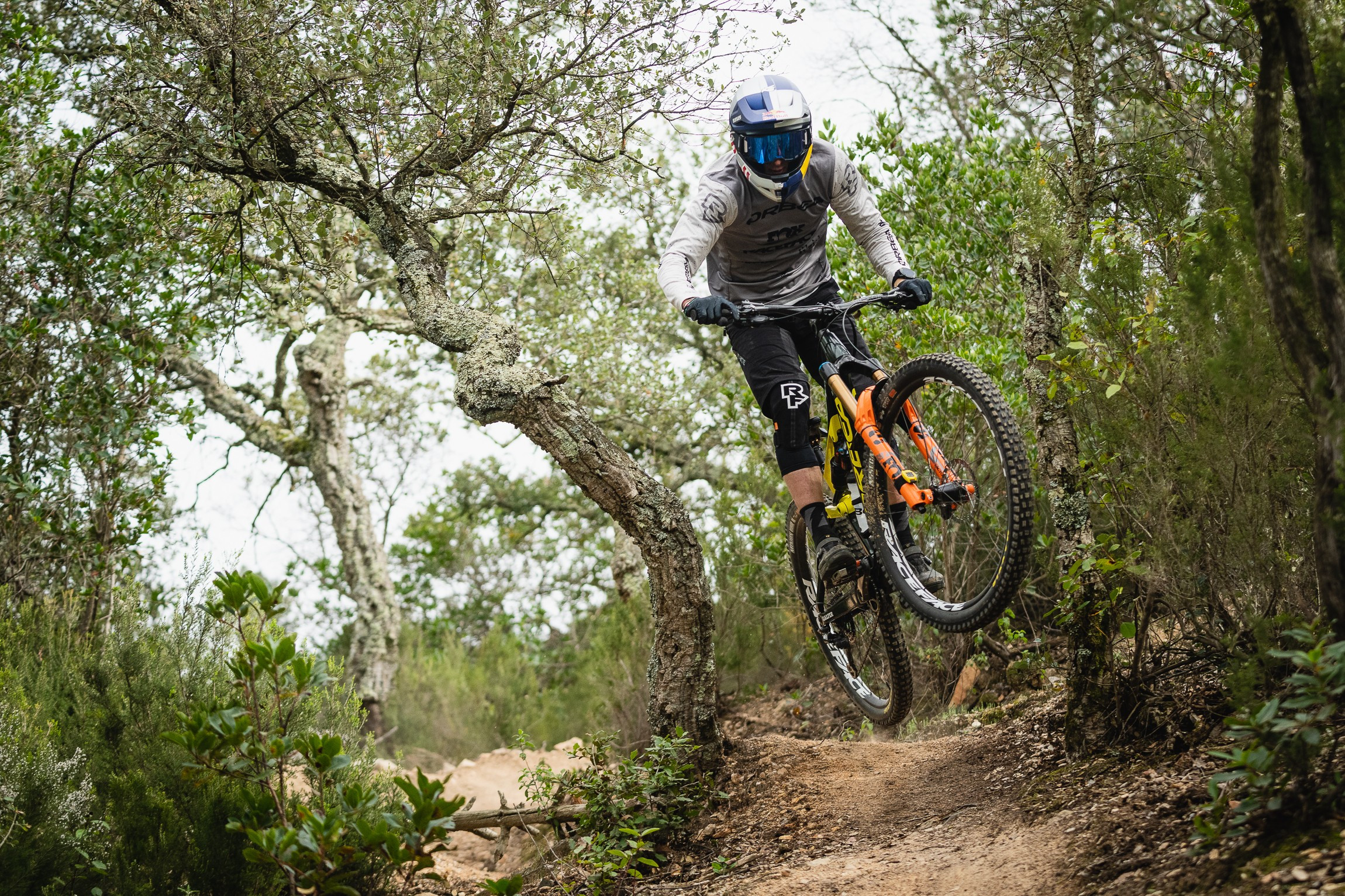 Downieville Classic trails
Downieville Classic trails
10.3. What Are the Best Times of Year to Ride in These Areas?
The best times of year to ride in these areas vary depending on the climate and terrain. Spring and fall are often ideal, with mild temperatures and fewer crowds.
- Moab, Utah: Spring and fall offer mild temperatures and ideal riding conditions.
- Downieville, California: Summer and fall are best, with dry trails and warm weather.
- Bellingham, Washington: Summer and early fall provide the driest conditions.
- Pisgah National Forest, North Carolina: Spring and fall offer mild temperatures and colorful foliage.
10.4. Are There Any Local Bike Shops or Resources in These Areas?
Yes, these areas have numerous local bike shops and resources that can provide advice, rentals, and repairs.
- Local Bike Shops: Offer expert advice and service.
- Trail Maps and Guides: Provide information on local trails and riding conditions.
- Riding Clubs and Organizations: Organize group rides and events.
10.5. What Safety Precautions Should You Take When Riding in These Locations?
Take appropriate safety precautions when riding in these locations, including wearing a helmet, carrying water and tools, and being aware of wildlife.
- Wear a Helmet: Protect your head from impacts.
- Carry Water and Tools: Stay hydrated and be prepared for mechanical issues.
- Be Aware of Wildlife: Watch out for animals on the trail and avoid disturbing their habitat.
- Check Weather Conditions: Be prepared for changing weather and trail conditions.
Enduro bikes provide a versatile and thrilling riding experience for tackling challenging terrain. Whether you’re racing or exploring new trails, understanding the features, benefits, and maintenance of enduro bikes will enhance your adventures.
Ready to dive deeper? Visit usabikers.net for detailed reviews, expert advice, and a thriving community of fellow motorcycle enthusiasts. Connect with us today and discover everything you need to know about enduro bikes and more! Address: 801 Sturgis Main St, Sturgis, SD 57785, United States. Phone: +1 (605) 347-2000.
FAQ: Your Questions About Enduro Bikes Answered
1. What exactly makes a bike an enduro bike?
An enduro bike is specifically designed for downhill performance combined with efficient climbing, featuring long-travel suspension (150-180mm), slack geometry, and robust components.
2. Can beginners ride enduro bikes?
Yes, beginners can ride enduro bikes, as their stable design and forgiving suspension can provide confidence on challenging trails, though they may be heavier than other types of bikes.
3. How does enduro differ from downhill mountain biking?
Enduro involves timed downhill stages and untimed climbs, requiring bikes to be efficient for both. Downhill mountain biking focuses solely on descending, with bikes built for maximum impact absorption without climbing considerations.
4. What is the ideal wheel size for an enduro bike?
The ideal wheel size for an enduro bike is typically 29 inches for enhanced stability and roll-over capability, though some riders prefer a mullet setup (29-inch front, 27.5-inch rear) for added maneuverability.
5. How much should I budget for a good enduro bike?
You should budget at least $3,000 to $4,500 for a good entry-level enduro bike, with higher-end models costing $7,000 or more, depending on the components and frame material.
6. What kind of maintenance do enduro bikes require?
Enduro bikes require regular cleaning, lubrication, and inspection of components, including checking the frame for cracks, inspecting brake pads, and ensuring bolts are tightened, to maintain optimal performance.
7. What are the best brands for enduro bikes?
Some of the best brands for enduro bikes include Specialized, Trek, Santa Cruz, Yeti, and Canyon, known for their innovative designs and high-performance features.
8. Can I use an enduro bike for trail riding?
Yes, you can use an enduro bike for trail riding, but it may feel less lively and efficient on flatter sections compared to a dedicated trail bike due to its heavier build and longer suspension travel.
9. What are the essential skills for enduro riding?
Essential skills for enduro riding include proper body positioning, effective braking, smooth cornering, and strategic line choice to navigate technical trails safely and efficiently.
10. How do I choose the right frame size for my enduro bike?
To choose the right frame size for your enduro bike, consult the manufacturer’s sizing guide, consider your height and inseam, and test ride different sizes if possible to ensure a comfortable and efficient fit.

